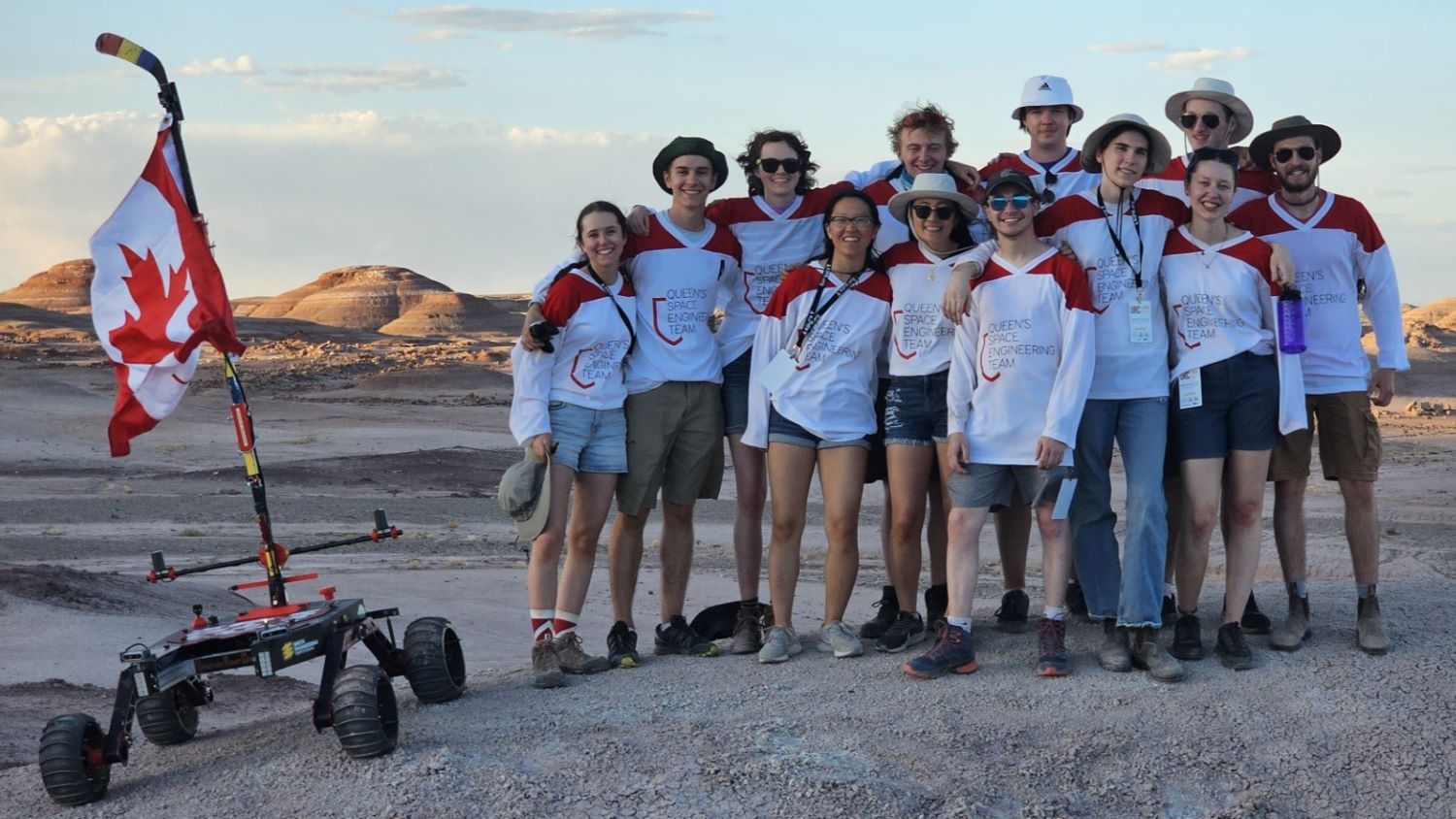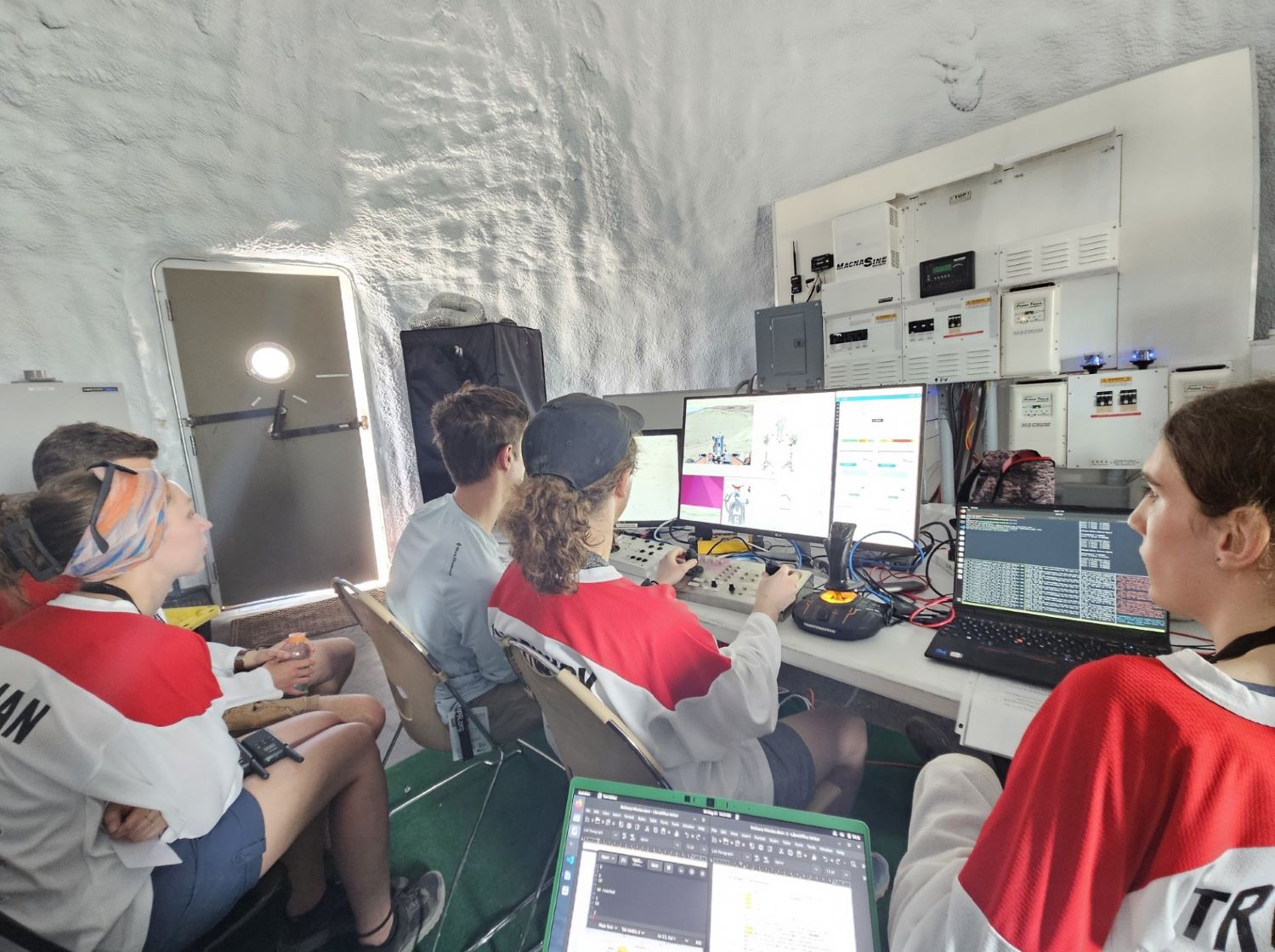
Queen’s Space Engineering Team (QSET) has done it again.
The student design team placed first among Canadian participants and seventh globally at the University Rover Challenge (URC) in Utah in June.
This matches the team’s 2023 result, though it scored more points this year than it ever has at URC.
“It was an absolute thrill to see it all come together, after working on paper and in mock-tasks for so long. Operating at competition is the only way to truly test our capabilities,” says fourth-year Mechanical Engineering student Caleb Chadwick, who was QSET’s Mechanical Operations Manager.
The Queen's Space Engineering Team is a multidisciplinary design team of 100-150 members which works on two large projects, a prototype Mars Rover, and a prototype satellite.
The annual three-day URC competition takes place at the Mars Desert Research Station in Hanksville, Utah. It’s the culmination of a year’s worth of work for the qualifying student teams who build a remote-controlled motor vehicle designed to explore the Red Planet.
This year, just 38 of 102 teams from around the world qualified. The Smith Engineering design team was one of the three Canadian teams to make it to Utah.
Chadwick says that as usual it was a big challenge for QSET to get the rover ready in time for competition.
“Trying to have good retention of the most capable people that we can get our hands on is always a limiter,” he says. “So we’re always juggling between the amount of scope that we want to tie in and improve year over year versus the resources that we have available.”
Participating teams don’t typically build their rovers from scratch every year, but instead make improvements to their builds.
QSET’s modifications this year included redesigning the wheel system, upgrading the robotic arm, installing a new soil collection system, improving the autonomous systems, and enhancing the rover’s signal reliability.
The team’s first test was to qualify for URC using a video and report to demonstrate the rover’s capabilities and alterations from last year.
Once in Utah, teams and their rovers compete in four separate missions over three days. Mission scores are combined with scores from the qualifying review for the final standings.
The four missions test everything from the rover’s ability for finding signs of life to retrieving and delivering materials to navigating entirely on its own.
The Queen’s team did well to place seventh at URC, says Chadwick, but they could have done even better. “One of the missions tests the rover arm’s dexterity and speed, and while our rover was capable of doing all of the tasks, a communications malfunction meant that the team’s rover was only active for 3 out of the 30 minutes of the task, scoring 15 out of 100 points in that time.”
“You always think about what could have been,” says Chadwick. “But at the same time, it’s not all about the points. It’s about what we were able to do with what we were given and how we can get even better for next year.”
Chadwick will be QSET’s Chief Technical Officer next year and already has “lots of ideas” for how they can improve.
Overall, though, he says being part of QSET or any student design team at Queen’s is really about improving your soft skills as an engineer and applying what you learn in class.
“It ties into communication, it ties into true design skills and optimization, being proactive, thinking on your feet. And ultimately, it builds on the pillars of what you’re taught in university. You have all these Lego bricks from your classes, and then you see how it truly comes together once you get your hands dirty on a design team.”
